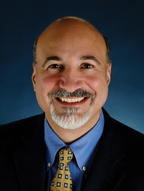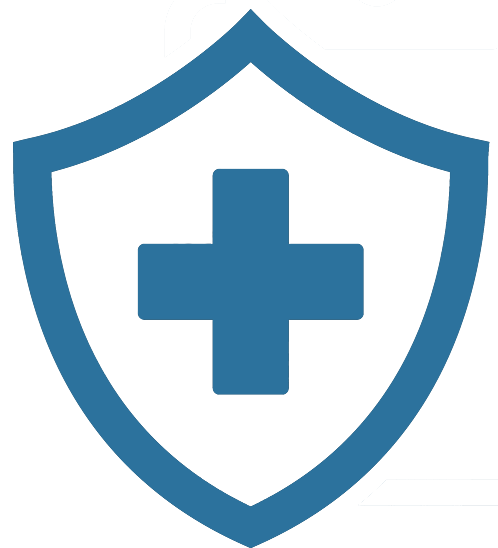Michael A. Miranda, MD

Specialties
Sports Medicine
Trauma & Fractures
Fragility Fractures
Nonunions/Malunions
Biography
Dr. Michael Miranda has been a practicing Orthopedic Surgeon since 1994. Since that time, he has operated on thousands of patients typically for complex problems. Dr. Miranda has lectured over 200 times to surgeons worldwide on surgical technique. He has been recognized by the American Academy of Orthopedic Surgeons for his volunteer work overseas, has been the Director of Orthopedic Trauma for Hartford Hospital for almost two decades and has been recognized as one of Connecticut’s Top Doctors annually for the past ten years. Most recently in 2021, Dr. Miranda has been appointed Clinical Professor in the Department of Orthopaedic Surgery at UConn School of Medicine by the UConn Health Board of Directors.
Dr. Miranda attended medical school at the University of Connecticut. He stayed on there completing his 5-year residency in Orthopedic Surgery. He then completed a one-year fellowship in Trauma in Pittsburgh where he helped care for the NHL Pittsburgh Penguins. Dr. Miranda then completed other fellowships in both Switzerland and Germany.
Dr. Miranda’s professional interests include minimally invasive surgery including arthroscopy of the shoulder and knee; managing complex fractures, nonunions and malunions. He is recognized worldwide as an expert in osteotomies of the bone. He currently sees patients in Hartford, Farmington and Glastonbury.
His personal interests include reading, exercising and collecting antique arms and armor.
Visit Dr. Miranda’s website www.michaelmirandamd.com
Education
| Medical School: | University of Connecticut 1988 MD |
| Internship: | University of Connecticut Health Center 1988-1989 General Surgery |
| University of Connecticut Health Center 1989-1993 Orthopedic Surgery | |
| Fellowship: | Allegheny General Hospital 1993-1994 Orthopedic Trauma |
Hospital Affiliations
Hartford Hospital
Orthopedic Associates Surgery Center
Publications/Presentations
Interview with Mike Miranda – AOTrauma Community Development Commission Chairperson
Presenter Host on AOTV- Keith Mayo MD – My Biggest Challenge. AO Davos Courses, Davos , Switzerland Dec 4th 2019–
Presenter Host on AOTV- Pietro Regazzoni MD – Interview with an Innovator. AO Davos Courses, Davos, Switzerland Dec 4th 2019–
Presenter Host on AOTV- Jack Wilber MD – Insight on a Career of Volunteerism. AO Davos Courses, Davos, Switzerland Dec 5th-2019
Moderator Expert Panel , Fireside Discussion on Periarticular Fractures. AO Davos Courses, Davos, Switzerland Dec 5th 2019
Moderator Medicolegal Ethics, Connecticut Bar Association Annual Meeting, Hartford CT. Nov 1st2019
“Are Currents Trends consistent with the Tenets of Biologic Plating?” Park City , UT. Sept 16th2019
“Intraarticular Fractures of the Distal Femur- Obtaining/Maintaining Reduction’ Chicago Trauma Symposium, Chicago IL Aug 17th 2019
Regenerative Medicine: Use of Stem Cells and PRP in the Injured Knee; a Debate Chicago Trauma Symposium, Chicago IL. Aug 17th 2019
Patient Information
Dr. Michael Miranda is a premier orthopedic surgeon specializing in trauma, reconstruction, and complex fractures. This past year, he was a featured speaker at conferences around the world where he shared his expertise and discussed current orthopedic trends.
Below he answers some questions about advancements in fracture care:
What are some of the newest advancements you have seen in orthopedics, especially fracture care, over the past few years?
The field of orthopedics is continuing to evolve at a rapid pace. One of the newest advancements is our ability to recognize the metabolic causes for fractures and delays in fracture healing. A second advancement is the use of special plates for weak or badly shattered bones. Finally, imaging has come a long way and we now use 3D imaging for understanding fracture patterns and to help plan fixation.
Are all fractures the same?
When there is a fracture, it is very important that the bone heal properly in its original position. There are several treatments for a broken bone which are based upon several factors, including how severe the break is and where it is.
While some bones can heal by wearing a cast, others may require more invasive treatments, such as bone fracture repair. Bone fracture repair is a surgery to fix a broken bone using metal screws, pins, rods, or plates to hold the bone in place.
How are complex fractures different than other fractures?
A complex fracture is when the bone is broken into many pieces and the surrounding tissue and cartilage is also damaged as a result. This can cause joint dislocation and loss of bone fragments. Complex fractures are complicated and are completely different from one patient to the next. If a fracture is improperly fixed in poor alignment, this can significantly affect the long term health of the joint.
You treat complex fractures such as periarticular fractures that occur in or immediately adjacent to a joint and can cause severe pain and disability. How are some of these more complex fractures treated?
There are a number of new options for treatment of these types of fractures. For instance, as I mentioned above, we use special plates to hold the bone as it heals. We also use a combination of implants to allow patients to weight bear earlier. These implants are being improved upon very frequently with new technological advancements and with a better understanding of how fractures heal best. The surgical procedures themselves are now becoming more and more minimally invasive as to decrease the overall trauma to the area of injury and to protect the local skin and muscles to a much greater extent. We also are using joint replacement for complex fractures. Getting people back on their feet as quickly as possible so they can resume daily activities or work is a key priority for us.
Have you seen a rise in injuries over the years?
As a society, we are seeing that older patients are more active than their counterparts in generations past. As a result, we have seen an increased rate of injuries due to increased activity, as well as more athletic injuries, than in the past.
To guide this population, we strongly encourage elderly patients to take calcium and vitamin D. We also encourage them to prepare their bodies as much as possible for the activities they anticipate doing by proactivity planning to increase activities slowly by 20% a week.
Why is it important to see a specialist in fracture care?
5-10% of fractures in North America are delayed in healing or don’t heal. Being operated on by a surgeon trained to be cautious of the blood supply to the fractured area means a higher likelihood of healing.
I pride myself on having over 30 years of experience with fixing fractures in many different ways. I design solutions to fracture problems that are tailored to an individual’s fracture, anatomy, medical problems, skin conditions, and activity level.
It is important to find someone with in-depth training in this area to truly ensure that you will regain mobility and heal properly. I have two fellowships in this subspecialty – one from the U.S. and the other from Switzerland, the birthplace of modern fracture care.
How do you share your expertise?
I frequently travel around the world with other recognized experts, teaching cutting edge techniques in this area. There are so many advancements in this area and I am willing to share my knowledge, as well as to continually deepen my own expertise.
I have delivered over 200 podium lectures around the world including China, South America, Europe, the Middle East, and North America. I deliver Grand Rounds as invited Lecturer for the Yale and Harvard Orthopedic Residency programs. I also serve as the invited speaker for the British Trauma Society’s annual meeting.
I also am proud to have participated for the past 5 years in the Minimally Invasive Osteosynthesis Expert Group, an international panel of surgeons tasked to study minimally invasive fracture fixation and develop implants and teaching methods to solve fracture care with the smallest surgical footprint.
I have served as the Director of Orthopedic Trauma for Hartford Hospital for the past 20 years, and as Senior Trustee and former international Chair membership for the world’s largest orthopedic trauma society, the AO Foundation. I am honored to have been recognized annually in Connecticut Magazine’s list of Best Doctors since 2007.
How can people contact you?
I see patients in Hartford, Glastonbury, Rocky Hill, and Farmington. I can be reached at (860) 549-8263.
Media
Dr. Miranda discuss the benefits of having an urgent care center focused on orthopedic injuries. Learn about the injuries he treats and the importance of proper fracture care and treatment.
Contact Information
Phone: 860-549-8263
Fax: 860-549-8998
Supported By:
Jason S. Pinho, PA-C
Locations

499 Farmington Avenue
Farmington, CT 06032

345 Western Boulevard
Glastonbury, CT 06033

